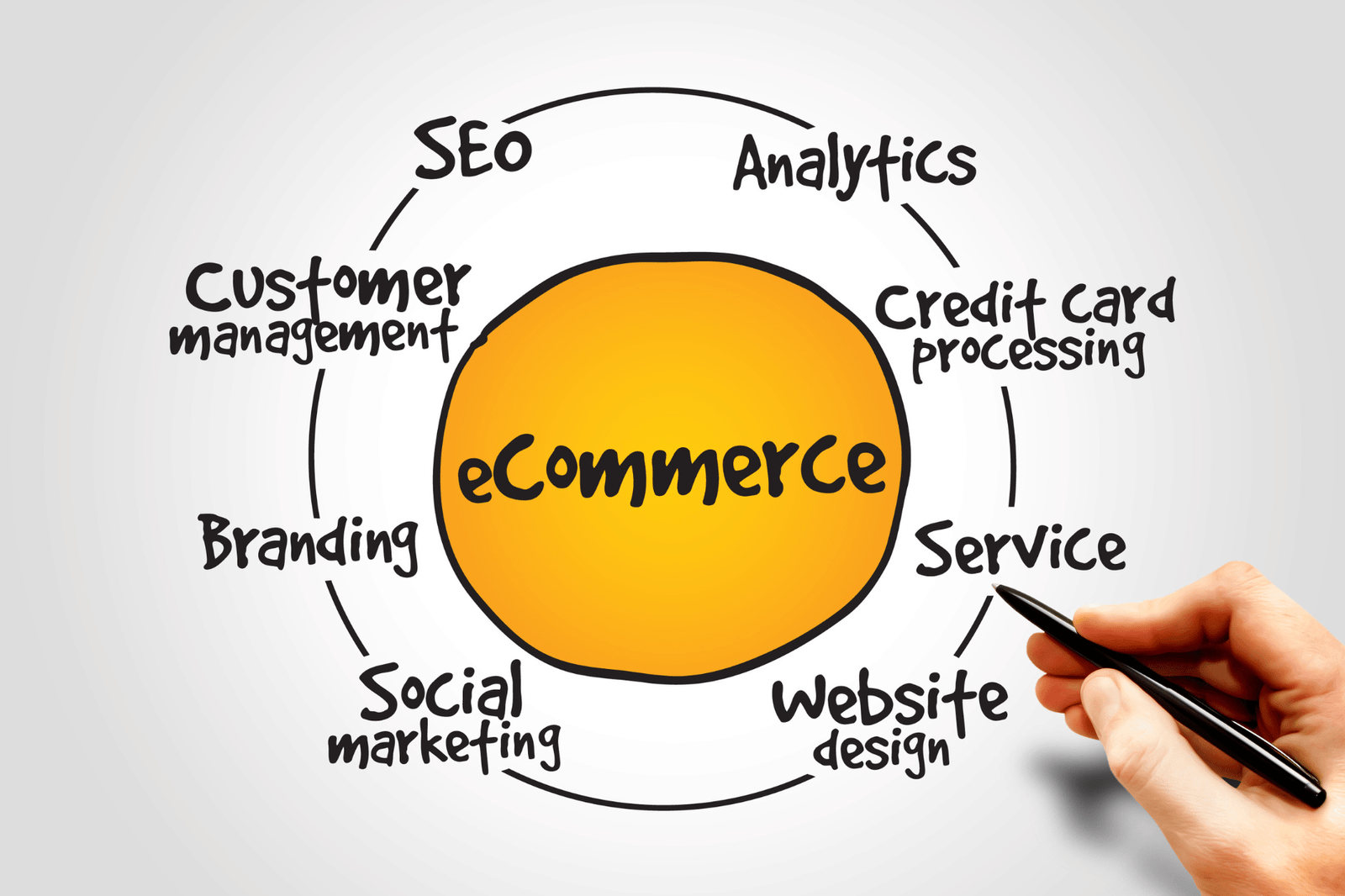Ecommerce is a rapidly growing industry that presents numerous opportunities for businesses of all sizes. However, navigating the complex world of ecommerce can be challenging and overwhelming, especially for those who are new to the industry. As someone who has been navigating this world for years, I can attest to the fact that it takes a lot of effort and expertise to build a successful ecommerce business.
In this blog post, I will share my insights on how to navigate the complex world of ecommerce and offer strategies for boosting sales and staying competitive. These strategies have been tried and tested, and I believe they can help businesses of all sizes and industries succeed in the ecommerce world.
First and foremost, it’s important to understand the unique challenges that ecommerce presents. Unlike brick-and-mortar stores, ecommerce businesses do not have the luxury of face-to-face interactions with customers, which can make it difficult to establish trust and build relationships. Additionally, online shoppers have different behaviors and expectations than those who shop in-store, which requires businesses to tailor their strategies accordingly.
However, despite these challenges, ecommerce also presents unique advantages, such as the ability to reach a global audience and collect valuable data on customer behavior. By leveraging these advantages and developing effective strategies, businesses can succeed in the ecommerce world.
In the following sections, I will discuss some of the most important strategies for navigating the complex world of ecommerce and boosting sales. From understanding online shopping behavior to maximizing online visibility, these strategies can help businesses stay competitive and succeed in the ever-changing world of ecommerce.
Understanding Online Shopping Behavior
One of the most important aspects of succeeding in ecommerce is understanding online shopping behavior. Online shoppers have different behaviors and expectations than those who shop in-store, and businesses must tailor their strategies accordingly to meet these expectations.
To start, it’s important to understand the factors that influence online shopping behavior. Some of the most important factors include:
- Price: Online shoppers are often looking for the best deals and prices, and may compare prices across different websites before making a purchase.
- Convenience: Online shopping is often more convenient than in-store shopping, as it allows customers to shop from the comfort of their own homes and avoid crowds and long lines.
- Product information: Online shoppers rely heavily on product information to make purchasing decisions, as they cannot physically touch or see the product before purchasing.
- Reviews and ratings: Online shoppers often rely on reviews and ratings from other customers to gauge the quality and reliability of a product or seller.
- Shipping and delivery options: Fast and affordable shipping and delivery options are important to online shoppers, and businesses that offer these options are more likely to succeed.
Once businesses have a clear understanding of the factors that influence online shopping behavior, they can tailor their strategies accordingly. Here are a few tips for tailoring ecommerce strategies to customer behavior:
- Offer competitive pricing: By offering competitive pricing, businesses can attract and retain customers who are looking for the best deals.
- Optimize website design for convenience: A user-friendly and easy-to-navigate website can improve the customer experience and encourage shoppers to make a purchase.
- Provide detailed product information: Detailed product descriptions, photos, and videos can help customers make informed purchasing decisions.
- Encourage reviews and ratings: Encouraging customers to leave reviews and ratings can help build trust and credibility with potential customers.
- Offer fast and affordable shipping and delivery options: By offering fast and affordable shipping and delivery options, businesses can improve the customer experience and increase the likelihood of repeat purchases.
By understanding online shopping behavior and tailoring ecommerce strategies accordingly, businesses can improve the customer experience and increase sales.
Creating a User-Friendly Website
One of the most important aspects of ecommerce success is creating a user-friendly website. A website that is easy to navigate, visually appealing, and optimized for sales can make a huge difference in a business’s bottom line. As someone who has built several successful ecommerce websites, I know firsthand the importance of website design.
First and foremost, website design should be visually appealing and consistent with your brand identity. A website that is visually unappealing or difficult to navigate can turn off potential customers and lead to lost sales. Additionally, it’s important to ensure that your website is mobile-friendly, as a growing number of shoppers are using their mobile devices to shop online.
In addition to visual appeal, website design should be optimized for sales. This means strategically placing calls to action, such as “Buy Now” or “Add to Cart,” throughout the website. It also means ensuring that product pages are well-organized and easy to navigate, with clear product descriptions, pricing information, and product images.
Another important aspect of website design is page load speed. Slow-loading pages can be frustrating for customers and lead to lost sales. To ensure that your website loads quickly, consider optimizing images and minimizing the use of plugins or other elements that can slow down page load times.
Finally, website security is crucial for ecommerce success. Customers need to trust that their personal and payment information is secure when making purchases online. Be sure to implement secure payment methods and SSL certification, and make sure your website is compliant with all relevant security regulations.
You should understand that creating a user-friendly website is essential for ecommerce success. By designing a website that is visually appealing, optimized for sales, and secure, businesses can build trust with customers and increase sales.
Maximizing Online Visibility
One of the biggest challenges in ecommerce is standing out among the competition. With so many online stores available, it can be difficult to get noticed and attract potential customers. Maximizing online visibility is crucial for success in ecommerce, and there are several strategies that businesses can use to achieve this goal.
Search engine optimization (SEO) is one of the most important strategies for maximizing online visibility. By optimizing their website for search engines, businesses can increase their chances of appearing on the first page of search results when customers search for relevant keywords. This can result in more traffic to the website and ultimately more sales.
To improve ecommerce SEO, businesses should focus on optimizing their website content, including product descriptions, category pages, and blog posts. They should also prioritize website speed and user experience, as these factors can impact search engine rankings.
Another strategy for maximizing online visibility is social media and content marketing. By creating and sharing engaging content on social media platforms, businesses can attract potential customers and increase their visibility online. This can include blog posts, infographics, videos, and more.
Email marketing is also a powerful tool for maximizing online visibility. By building an email list of interested customers, businesses can send targeted messages and promotions to their subscribers, increasing their chances of making a sale.
Overall, there are numerous strategies for maximizing online visibility in ecommerce. By focusing on SEO, social media and content marketing, and email marketing, businesses can increase their online presence and attract more potential customers.
Building a Strong Customer Base
As any ecommerce business owner knows, building a strong customer base is essential for long-term success. Repeat customers are more valuable than one-time customers because they tend to spend more and are more likely to refer others to your business. Additionally, happy customers can be your best marketing tool, providing positive reviews and testimonials that can attract new customers.
To build a strong customer base, it’s important to focus on customer satisfaction and the customer journey. This means ensuring that every interaction a customer has with your business is positive and memorable. Here are some strategies for building a strong customer base:
- Offer excellent customer service: Respond to customer inquiries and complaints promptly and professionally. Make it easy for customers to get in touch with you and provide multiple channels for customer support, such as email, phone, and live chat.
- Personalize the customer experience: Use customer data to personalize the shopping experience, such as recommending products based on past purchases or sending personalized emails.
- Implement a loyalty program: Reward loyal customers with discounts, exclusive offers, or other incentives. This can encourage repeat business and help build customer loyalty.
- Collect customer feedback: Encourage customers to provide feedback on their experience with your business. This can help you identify areas for improvement and make necessary changes to improve customer satisfaction.
- Focus on the customer journey: Map out the customer journey and identify areas where you can improve the experience. Make sure the buying process is easy and intuitive, and provide clear information about shipping, returns, and other policies.
By focusing on customer satisfaction and the customer journey, businesses can build a strong customer base that will help them succeed in the competitive world of ecommerce. Don’t underestimate the power of happy customers – they can be your best marketing tool and help drive long-term success.
Driving Sales and Conversions
Driving sales and conversions is the ultimate goal of any ecommerce business. However, with so many businesses vying for customers’ attention, it can be challenging to stand out from the crowd and convert visitors into customers. Fortunately, there are several strategies that businesses can employ to boost their conversion rates and increase sales.
One effective strategy is retargeting and remarketing. Retargeting involves targeting customers who have previously visited your website but did not make a purchase, while remarketing involves targeting customers who have made a purchase in the past. By using targeted ads and personalized messaging, businesses can increase the likelihood that these customers will make a purchase in the future.
Another important factor in driving sales and conversions is mobile optimization. With more and more customers using mobile devices to shop online, it’s essential that businesses optimize their websites for mobile use. This includes ensuring that the website loads quickly and is easy to navigate on a mobile device.
In addition to mobile optimization, payment methods and security are also important considerations for driving sales and conversions. Customers want to feel confident that their payment information is secure when making a purchase, so businesses should invest in secure payment methods and prominently display their security measures on their website.
Finally, businesses should also focus on boosting their conversion rates by using techniques such as upselling and cross-selling. Upselling involves encouraging customers to purchase a higher-priced product or service than what they originally intended, while cross-selling involves suggesting related products or services that complement what the customer is already purchasing. By using these techniques effectively, businesses can increase the average value of each sale and drive more revenue.
In conclusion, driving sales and conversions is a crucial aspect of ecommerce success. By utilizing retargeting and remarketing, optimizing for mobile use, investing in payment security, and using upselling and cross-selling techniques, businesses can increase their conversion rates and boost their bottom line.
Staying Competitive in Ecommerce:
Staying competitive in the world of ecommerce is crucial for businesses to succeed. With the rapidly changing nature of the industry, it’s important to stay ahead of the curve and keep up with the latest trends and best practices. Here are some strategies that I’ve found to be effective in staying competitive in ecommerce:
- Conduct Competitive Analysis: One of the most effective ways to stay competitive in ecommerce is to conduct regular competitive analysis. This involves monitoring your competitors’ pricing strategies, marketing efforts, website design, and customer experience. By understanding what your competitors are doing, you can identify areas where you can improve and stay ahead of the curve.
- Utilize Emerging Technologies: Ecommerce is a constantly evolving industry, and there are always new technologies emerging that can help businesses stay competitive. For example, chatbots and virtual assistants can improve customer service, while augmented reality can enhance the customer experience. By staying up to date with emerging technologies, businesses can offer innovative solutions that set them apart from their competitors.
- Focus on Personalization: Personalization is becoming increasingly important in ecommerce, as customers expect tailored experiences that meet their individual needs and preferences. By collecting data on customer behavior and using it to personalize marketing efforts and product recommendations, businesses can create a more engaging and relevant experience for customers.
- Keep Up with Industry Trends: Finally, it’s important to stay up to date with industry trends and best practices. This includes attending industry conferences and events, following industry publications and blogs, and staying active on social media. By keeping up with the latest trends and best practices, businesses can stay competitive and continue to grow in the ever-changing world of ecommerce.
In short, staying competitive in ecommerce requires a proactive approach that involves ongoing analysis, adaptation, and innovation. By focusing on personalization, utilizing emerging technologies, and keeping up with industry trends, businesses can succeed in the ecommerce world and continue to grow and thrive.
Concluding Thoughts
In conclusion, navigating the complex world of ecommerce requires a combination of expertise, effort, and adaptability. By understanding online shopping behavior, creating a user-friendly website, maximizing online visibility, building a strong customer base, driving sales and conversions, and staying competitive, businesses can succeed in the ecommerce world.
One of the key takeaways from this blog post is the importance of customer experience. In today’s competitive ecommerce landscape, providing an exceptional customer experience is crucial for building a strong customer base and driving sales. This can be achieved through user-friendly website design, personalized marketing, and exceptional customer service.
Another important takeaway is the need for continuous adaptation and improvement. The ecommerce industry is constantly evolving, and businesses that fail to keep up with the latest trends and best practices risk falling behind their competitors. By staying up-to-date with industry trends and continuously analyzing and improving their strategies, businesses can stay competitive and succeed in the ecommerce world.
Finally, it’s important to remember that building a successful ecommerce business takes time, effort, and patience. Success in ecommerce is not achieved overnight, but rather through consistent hard work and dedication. By implementing the strategies discussed in this blog post and staying committed to their ecommerce goals, businesses can achieve long-term success in this exciting and dynamic industry.




























